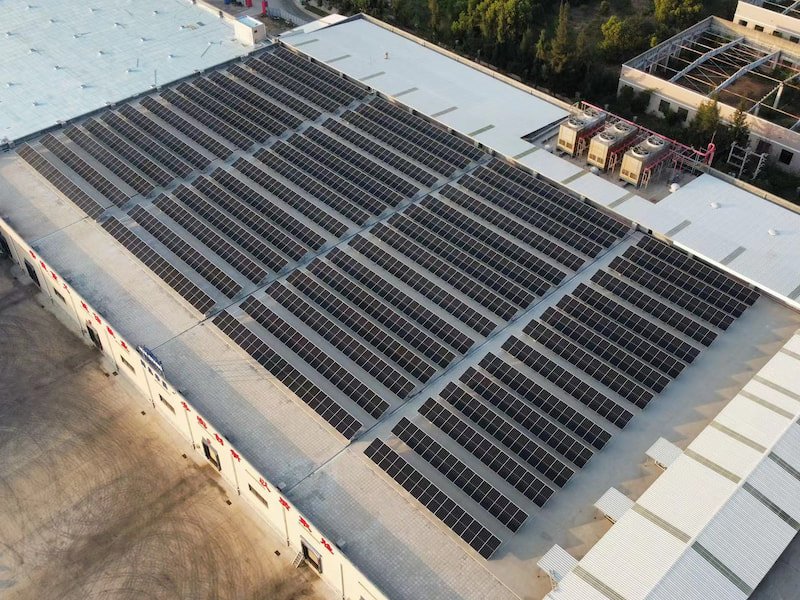In recent years, the global push towards sustainable energy solutions has been intensifying. One of the key innovations in this movement is the development of distributed generation systems, particularly rooftop solar power plants. These systems are transforming how electricity is generated and consumed, making use of existing infrastructure while minimizing environmental impact.
A notable example of such a system is the successful grid connection of a 1MW rooftop distributed power plant. This project marks a significant achievement in renewable energy deployment and demonstrates how distributed solar energy can play a crucial role in reducing carbon footprints and enhancing energy security.

What is a Rooftop Distributed Power Plant?
A rooftop distributed power plant is a solar energy system installed on the roof of a building or structure, designed to generate electricity for local consumption or to be fed back into the grid. Unlike traditional power plants, which are centralized and large-scale, rooftop power plants are decentralized and often smaller in capacity, typically ranging from a few kilowatts to a few megawatts.
These plants contribute to the decentralization of power generation, reducing transmission losses and improving grid reliability. They are also easier and quicker to deploy, especially in urban settings where space for traditional power plants is limited.
The Importance of Distributed Energy Generation
The transition to renewable energy sources is critical in the fight against climate change. Distributed energy generation, such as rooftop solar, plays a pivotal role in this transition for several reasons:
Energy Independence: By generating power locally, buildings or communities can reduce their dependence on centralized power plants and external energy suppliers.
Grid Stability: Distributed systems like rooftop solar help stabilize the grid by reducing the strain on central power plants during peak demand periods.
Environmental Impact: Solar energy is clean and renewable, significantly reducing greenhouse gas emissions compared to conventional fossil fuel-based power generation.
Cost Efficiency: With the cost of solar panels dropping and technology improving, distributed solar energy has become increasingly affordable, offering long-term savings for consumers.
Overview of the 1MW Rooftop Distributed Power Plant Project
The 1MW rooftop distributed power plant project was developed to harness the full potential of solar energy in an urban setting. The installation is located on the rooftop of a commercial building, making use of unused space while contributing to sustainability goals. The plant consists of solar panels, an inverter system, and the necessary grid connection equipment to ensure that excess power can be fed back into the local electricity grid.
Key Features of the Project:
Capacity: The project has a total installed capacity of 1 megawatt (MW), enough to power hundreds of households or a large commercial building.
Location: The system is installed on a rooftop, making it an ideal example of utilizing existing infrastructure for energy generation.
Components: The plant includes high-efficiency solar panels, smart inverters, energy meters, and grid synchronization equipment.
Project Timeline: The project took several months from planning to commissioning, involving stages such as design, construction, and testing.
The Process of Grid Connection
Grid connection is a crucial step in ensuring that the electricity generated by the solar plant can be utilized effectively. The process typically involves several stages:
Pre-Grid Connection Assessment: Before beginning the grid connection, the project team conducts a thorough assessment of the local grid infrastructure to ensure compatibility. This includes evaluating the capacity of the local grid to handle the additional input of power from the rooftop solar plant.
Installation of Grid Synchronization Equipment: For the plant to feed power into the grid safely, synchronization equipment is installed. This includes inverters that convert the DC power generated by the solar panels into AC power compatible with the grid.
Compliance with Local Regulations: Distributed solar plants must meet specific regulatory requirements to ensure the grid remains stable and safe. The 1MW plant underwent inspections and testing to ensure it adhered to the local energy standards.
Grid Connection Testing: After installation, the system undergoes a series of tests to ensure it operates efficiently and safely. This includes verifying that the system can be switched on and off without damaging the grid and that it can handle fluctuations in energy production.
Final Commissioning: After successful testing, the plant is officially connected to the grid. At this stage, the rooftop solar plant begins to generate and feed electricity back into the grid, providing energy to the surrounding community or businesses.






